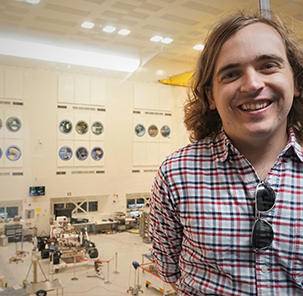 Thomas Connor
Thomas ConnorWe are happy to welcome Thomas Connor as a guest blogger today. Thomas is a NASA Postdoctoral Fellow at NASA Jet Propulsion Laboratory (JPL) in Pasadena, California and the author of a paper that is the subject of our most recent press release. He completed his undergraduate degree at Case Western Reserve University and earned his doctorate from Michigan State University. Prior to starting at JPL, Dr. Connor was a postdoctoral fellow at the Observatories of the Carnegie Institution for Science. His scientific interests include black holes in the dawn of the Universe, the evolution of galaxies in dense environments, and the structure of the Cosmic Web.
Most of the fundamental questions of astronomy relate to how the universe as we observe it was assembled. From stars and planets to nebulae and galaxies, many of the investigations of astronomy come down to crafting a coherent narrative of formation and evolution. Currently, that narrative is struggling to be built in the early universe, where supermassive black holes with masses a billion times that of the Sun are seen only a few hundred million years after the Big Bang. The challenge here is that, while we can model ways for such massive objects to form and grow, compressing that growth into such a short time scale is much more difficult. As an analogy, it is not surprising that an author can write a novel, but it would be astounding if she could do so in only one day.
Black holes grow by eating their surroundings, but, contrary to the typical depiction of these objects, they do not suck. Rather, they slowly nibble their way through an "accretion disk," an orbiting disk of gas that acts as a buffet for the black hole. As more gas makes its way inward, this disk will get hot from all of the friction of particles rubbing together, and it will start glowing like a hot coal. This bright light will act like a strong wind, pushing away further gas from replenishing the disk. Thus, the black hole's feeding is self-limiting — if it eats too fast, it won't be able to restock the buffet, and so it will have to slow down. This fundamental limit is why we are puzzled at how such massive black holes can exist so early.